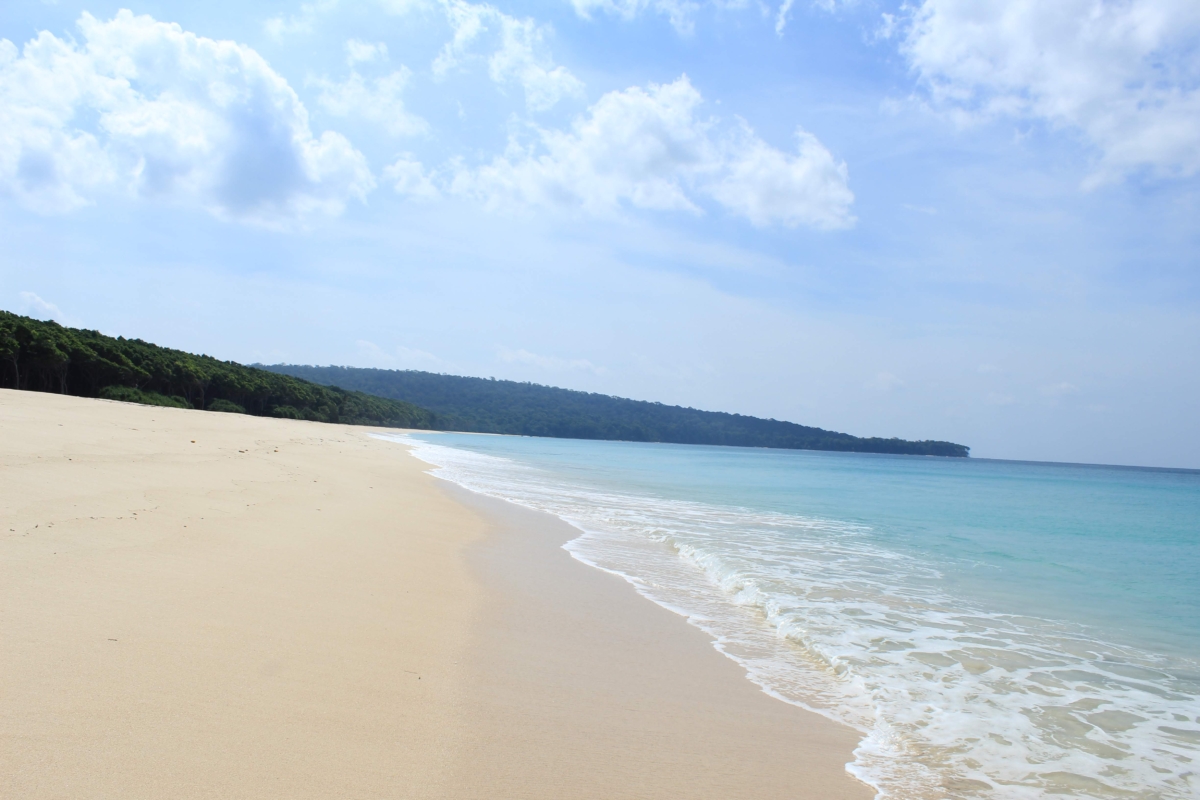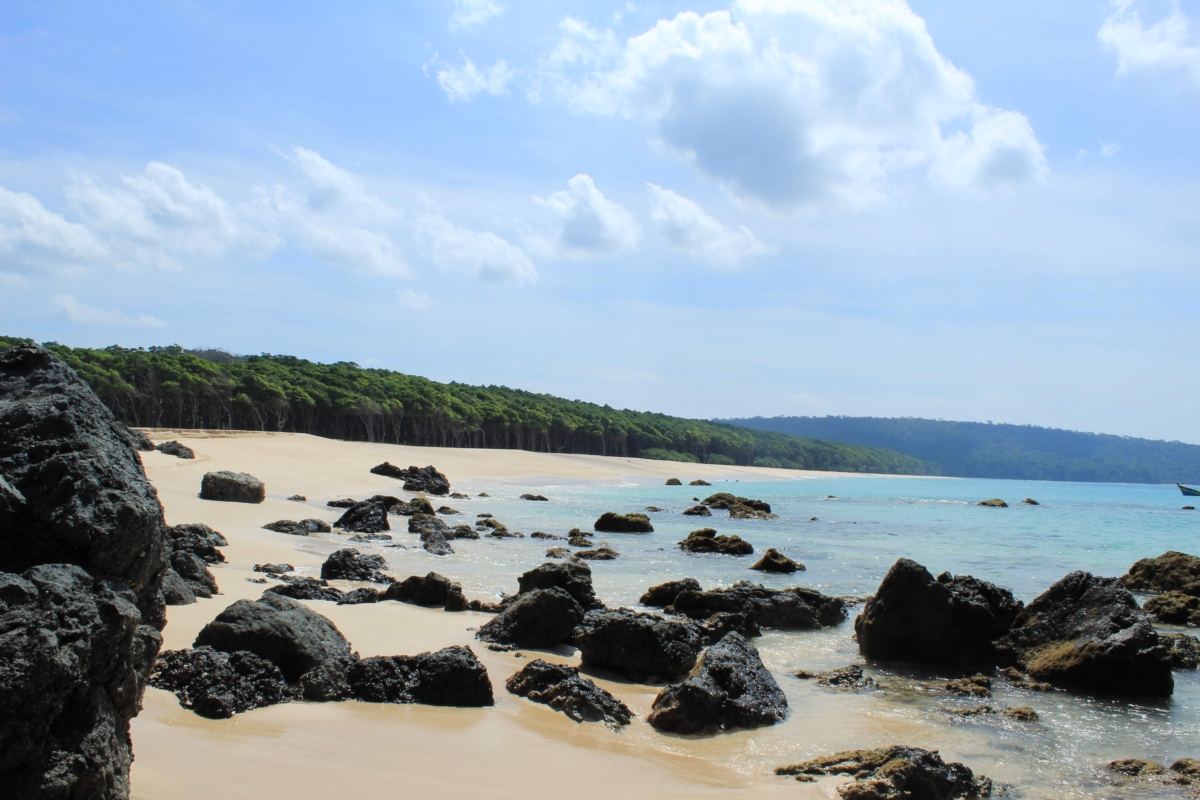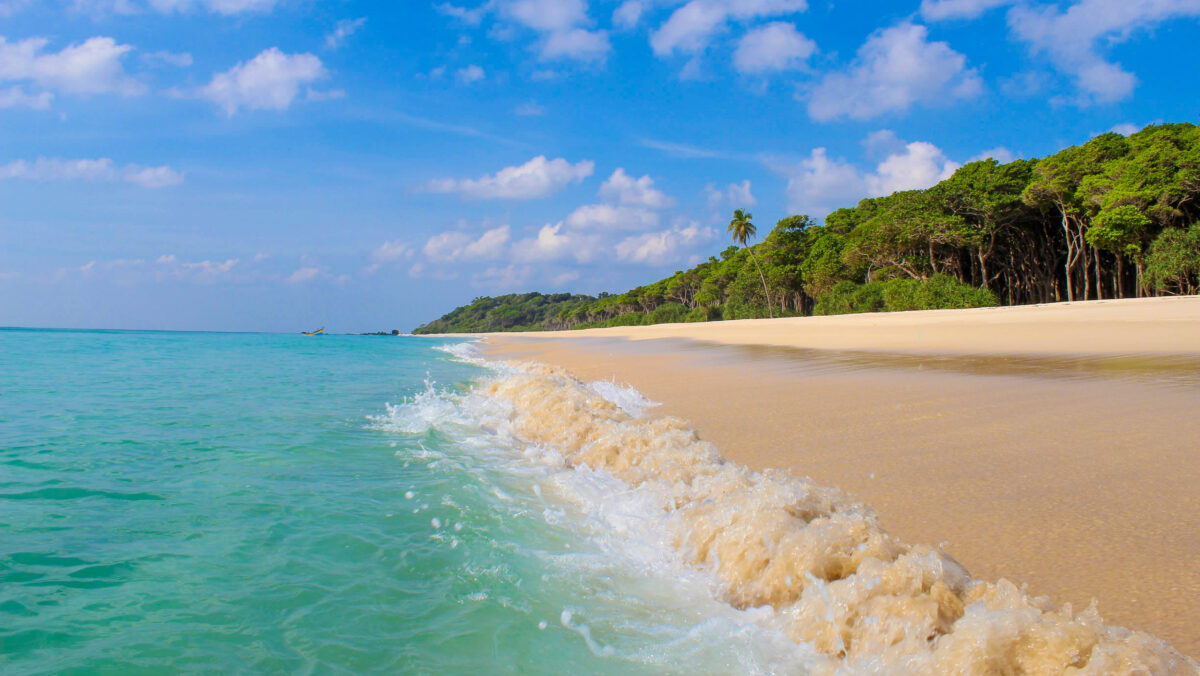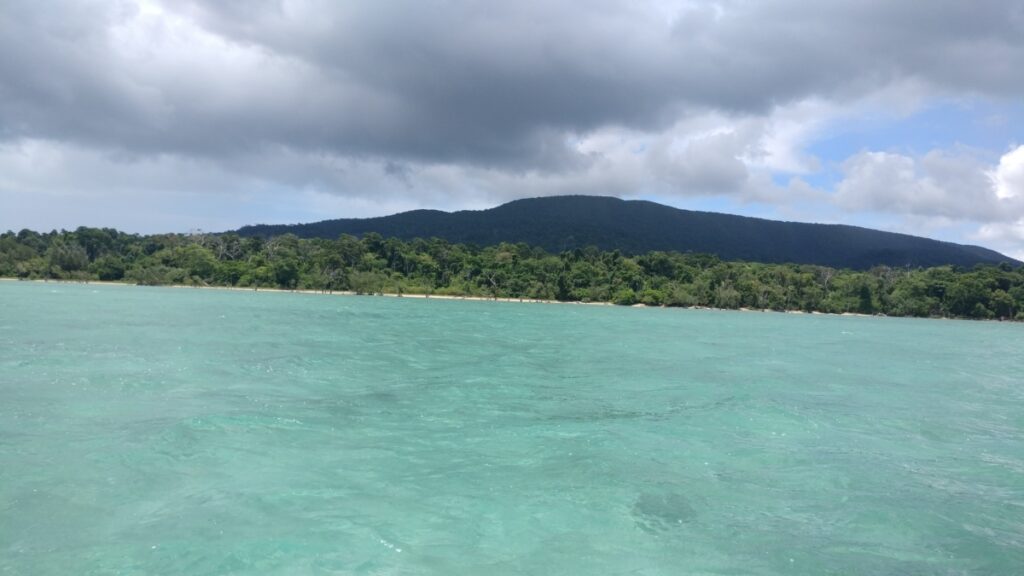Step into the enthralling vibes of an ideal tropical island vacation in the Andaman’s Rutland where reefs with highly diversified and colorful live corals— hidden coves nestled in the cradle of rocky hills, and wide white sand beaches adorned with the tall standing canopies of littoral trees all converge, embracing the stunning aura of turquoise and blue waters of the Andaman Sea.
Situated within the Labyrinth group of Islands, Rutland Island occupies a significant position in the southern region of the Andaman group, separated by Duncan Passage from Little Andaman Island. With a total area of 137.2 km² and approximately 60 km of coastline along the Macpherson Strait from South Andaman, Rutland Island is integral to the Burma-Andaman-Java subduction complex. Marked by rugged terrain, the island exhibits N–S striking tectono-stratigraphic elements akin to the Java Trench trend.
Secluded Beach Hopping at its Finest in Andaman’s Rutland Island
Rutland Island offers a world-class secluded beach hopping experience that transcends traditional coastal exploration. With its diverse array of beach types, each accompanied by unique water colors, visitors are treated to a visual and sensory feast. From the pristine white sand beaches adorned with turquoise and deep blue hues to the rocky shores boasting dramatic contrasts of green and blue, Rutland’s coastal landscapes are a masterpiece of nature. Coral reefs showcase a vibrant underwater world, secluded coves provide tranquil escapes with crystal-clear waters, and mangrove lagoons offer a unique color palette of green and brown. The estuarine beaches present a harmonious blend of freshwater and saltwater, while golden sand beaches radiate with sunlight. Cliffside beaches, with their deep blue waters, add a touch of majesty to the journey. Rutland Island’s secluded beach hopping is an unparalleled experience, inviting travelers to uncover the hidden treasures of its coastal wonders.


The island presents two standout beach pavilions— Bada Khari (Wrongly mentioned Cobra Beach in Google Map), situated at the western shore of the middle of the island in Woodmason Bay, is a hidden gem with the finest beach quality as per the Clean Coast Index (CCI), among South Andaman’s all coastal wonders, including the famous tourist beaches like Jolly Buoy and Wandoor. Its wide beach pavilion, cradled within a serene cove, invites visitors to bask in the tranquility of this secluded haven.
On the south-western tip of Rutland Island, Jahaji Dera takes center stage as the largest beach pavilion in South Andaman, boasting an expansive 11-hectare area of white sands having littoral forests of Andaman Bullet-Wood or Sea Mohua at the one side and the shallow waters of soothing teal green hue at the other.

Apart from these two iconic beaches, Rutland Island unfolds a mosaic of coastal charms- Niranjan Balu and Hathi Level Beach along the northwestern stretch boast pristine landscapes. Moving to the middle of the western side, beaches like Katla Dera, Photo Nallah 1, Photo Nallah 2, Dhani Khari, and Bakra Balu offer diverse coastal experiences. As the journey continues southeast, Pharsa Dera and Machi Dera showcase their unique beach pavilion settings. The Rutland Island coastline also reveals secluded coves with cliffs, adding an adventurous touch to the beach-hopping expedition. These beaches, scattered along the island, contribute to Rutland’s reputation as a premier destination for those seeking coastal beauty and tranquility.
Diving at the Rutland Island’s Highly Diversified Coral Reefs
Dive into the unparalleled coral richness of Rutland Island, a hidden gem that stands out among the world’s premier diving destinations. Boasting a staggering over 300 species of scleractinian corals, Rutland Island surpasses renowned diving regions such as the Arafura Sea, the Red Sea, and the Gulf of Mannar. Unlike any other, this underwater paradise offers a diverse ecosystem where the Acroporidae and Faviidae families dominate, with 88 and 82 species respectively. Rutland Island’s coral bounty exceeds the combined total of some globally acclaimed sites.
Zooming into the Andaman and Nicobar Islands, renowned for their rich diversity with 581 species of scleractinian corals, Rutland Island stands out as a distinctive contributor, representing itself with an impressive 56.97% of this diverse array. Notably, Rutland’s Faviidae family dominance at 82.82% eclipses the region’s norm. For avid scuba enthusiasts, Rutland Island beckons as a unique and unparalleled destination, where marine biodiversity reaches extraordinary heights, rivaling and surpassing global and regional benchmarks.
Immerse yourself in the vibrant underwater landscapes, discover 35 new species not found elsewhere, and witness the thriving marine life that calls this island home. For scuba enthusiasts seeking an extraordinary and unmatched underwater adventure, Rutland Island promises an experience beyond compare, a haven where the marine diversity sets it apart as a world-class diving destination. Dive deep and explore the secrets of Rutland’s underwater wonders!
Popular Diving Sites:
– At the South Western side of the island 200 m off the shore of the peninsula that divides the Jahaji Beach from the Woodsman Bay Beach (Bada Khari Beach).
– At the South Eastern end, 50 m off the shore of Portman Bay Beach, a small sandy shore cradled in a narrow cove with super crystal clear water waters with underwater visibility upto as high as 60 m deep.
– At the North Western end, there are sea-grass beds
-At the South Eastern end, there are sea-weed beds
Flora and Fauna of Rutland Island
The island boasts of luxuriant tropical evergreen forests, natural freshwater streams, and endemic fauna such as the Andaman teal and imperial pigeon, while its beaches serve as crucial nesting grounds for marine turtles. The shallow fringing reefs and coral gardens placed between off the shore of Jahaji beach and East Twin Island are famous for Manta Ray spotting.

